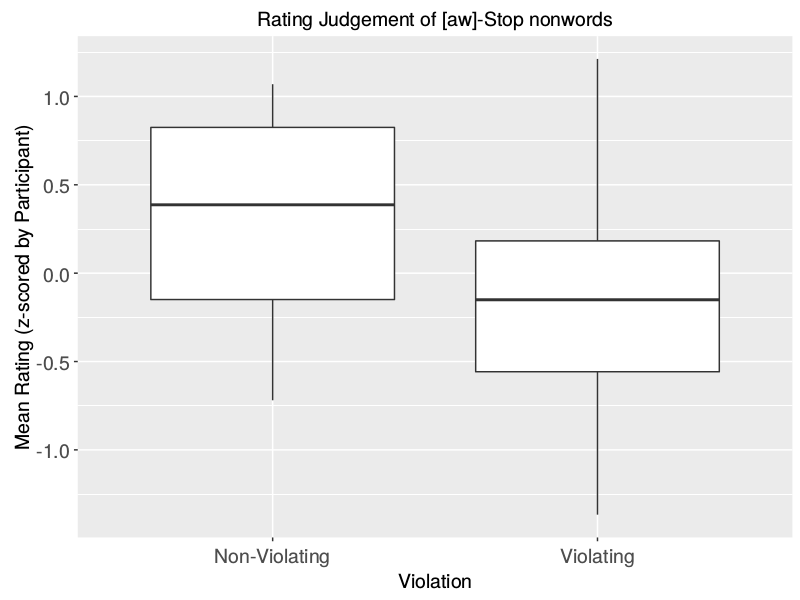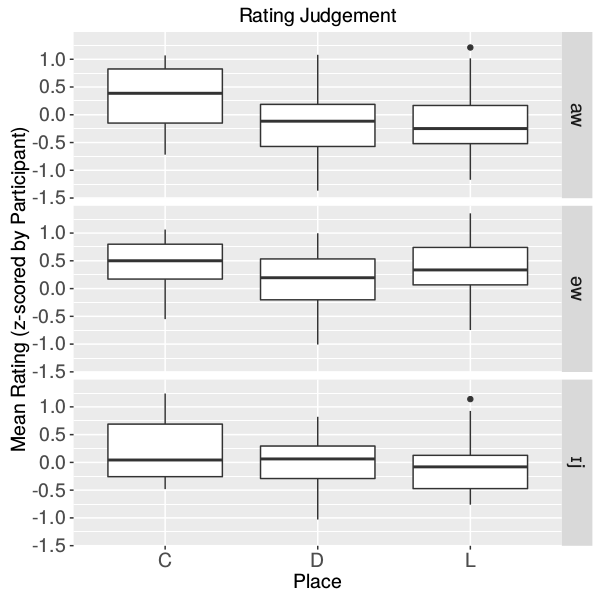Phonotactics with[awt] rules: the learnability of a simple, unnatural pattern in English
Project Summary:
In this paper, we examine the English phonotactic pattern where consonants following /aw/ are restricted to coronals; hence tout, but not */tawk/, */tawp/ (e.g. Halle & Clements 1983). The pattern (‘awT’) is pretty regular, more so than velar softening. It is general, in that it affects a large swathe of the lexicon. It is formally quite simple, more so than the -s pattern. And it is not natural. It is the synchronically accidental outcome of a series of largely unrelated sound changes; each of the changes might be natural, but their cumulative effect is not. We report the results of two non-word judgement experiments designed to test the extent to which native speakers of English have tacit knowledge of the awT pattern. Broadly speaking, the results of both experiments show weak evidence of an awareness of awT but little or no evidence that this reflects grammaticalised knowledge. That is, to the extent that speakers have any tacit inkling of the pattern at all, it is probably not encapsulated in anything like a phonologist’s rule or constraint. Rather it's based on lexical statistics such as neighbourhood density and phonotactic probability.
Read more from:
Publications:
John Harris, Nicholas Neasom & Kevin Tang. In prep. Phonotactics with [awt] rules: the learnability of a simple, unnatural pattern in English.
Presentations:
John Harris, Nicholas Neasom & Kevin Tang. May, 2016. Phonotactics with [awt] rules: the learnability of a simple, unnatural pattern in English. 24th Manchester Phonology Meeting, University of Manchester, UK. [abstract] [poster]
/aw/+stop: awT (non-)violations

/aw/ vs other vowels (stop-final nonwords)



